Drimiopsis ( Drimiopsis ) is a perennial ground cover of the Asparagus family. Some species of the genus are represented by herbaceous deciduous plants. This culture has the second name “ledeburgia”. It comes from African countries. Especially common in Kenya, Mozambique, South Africa. In indoor floriculture, a tropical flower is a great success. When grown as a pot culture, it forms leaf rosettes. It looks like an onion.
Description
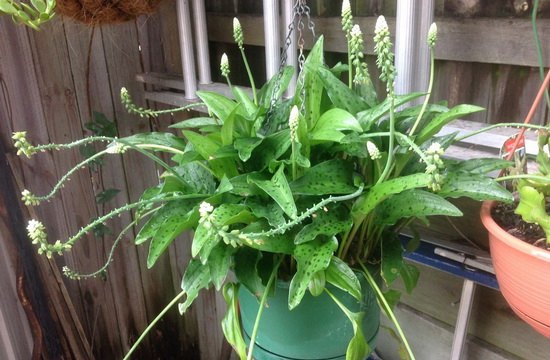
Drimiopsis is a bulbous plant with oval elongated bulbs covered with brown scales, 1/2 above the ground. Its height is 25 – 50 cm. The flower develops slowly, forming no more than three leaf plates during the growing season.
The leaves are heart-shaped or broadly oval, pointed at the end, long-petiolate, dense, smooth, shiny, olive-green in color. Patterns consisting of strokes, spots, small dots may be present on the surface of the foliage. The length of the leaf plates is 17 – 20 cm. The pattern on the foliage appears only when the plant is in bright light. For this reason, from mid-September, it begins to fade and completely disappears.

The inflorescences of ledeburgia are racemose or spicate, dense, consisting of flowers with a diameter of 0.5 cm. In one inflorescence, from 15 to 30 greenish, cream or white buds with a pleasant aroma reminiscent of the fragrance of a lily of the valley can form. The flowers bloom alternately, starting from the bottom of the inflorescence. Drimiopsis blooms for 2 months or longer, and this happens several times a year.
This culture is long-lived. With proper care, it can develop and form buds for 10 years. Ledeburgia serves not only to decorate the room, but also to purify the air.
Kinds
The types of drimiopsis common in indoor floriculture are distinguished by beautiful foliage, abundant long flowering, and unpretentious care. The most famous of them are described below.
Drimiopsis Kirk. Evergreen perennial growing up to half a meter in height. It has rounded, slightly elongated white bulbs. The leaf plates are thick, dense, lanceolate, with a narrowed base and a pointed end, up to 35 cm long, up to 4 cm wide. The color of the foliage is rich green. On its surface there are dark green strokes and stripes. The lower part of the leaf plate is gray in color. On peduncles 20-30 cm long, dense racemose inflorescences develop with 20-30 small flowers of a white-pink hue. Drimiopsis Kirk needs a dormant period, at which time the plant stops developing, recovers and accumulates strength for growth and flowering next year.

Drimiopsis spotted. The plant is 40 – 50 cm high. It consists of a lush leaf rosette, which includes heart-shaped, dense, rich green, long-leaved leaf blades. Their length is 15 cm, width – 4 cm. Peduncles about 20 cm long, with racemose curved inflorescences containing up to 20 cream-colored flowers. Flowering can be observed from April to July.
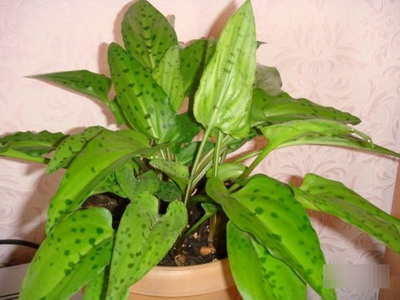
Drimiopsis striped. Interesting appearance, reaching 30 – 40 cm in height. Differs in oval elongated leaves, slightly narrowed at the base. Foliage color is bright green. On its surface there are dark green longitudinal stripes.

Drimiopsis purple. The bush grows to no more than 30 cm. It has elongated, pointed at the end foliage with a wavy edge. On the surface of the leaf plate there are many dark green specks. Petioles and base of leaves purple.
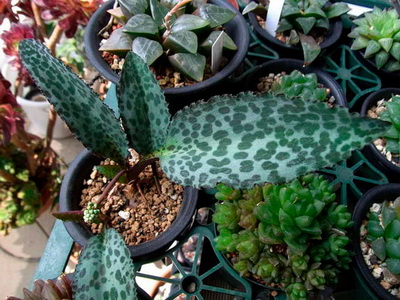
Drimiopsis variegated. Valued for beautiful oblong foliage with wide light stripes along the edge or in the central part. Some specimens have yellow leaf plates.

Drimiopsis dolomiticus. Dwarf species 10 – 15 cm high. Leaves are formed in the root zone. Leaf plates are broadly oval, petiolate, shaped like a shell. The surface of the light green foliage is dotted with numerous dark spots. Peduncles are thick, up to 20 cm long, with spicate inflorescences of a light green color.

Drimiopsis Burka. A very beautiful, unusual outwardly plant with dense oval leaves with a rounded base. The color of the leaf plates is gray-blue. On the surface of the foliage there are dark green spots of various sizes. The height of this variety is 10 cm.

Reproduction
This culture is propagated with the help of seeds, cuttings, bulbs. Before proceeding with this work, you should study the information about the features of its implementation. Having learned all the nuances of reproduction, one can hope to get a strong healthy young specimen.

Rooting of bulbs is carried out in the spring months. This work is recommended to be combined with plant transplantation. Lateral large bulbs are carefully separated from the mother specimen. Slices are sprinkled with crushed coal. For germination, they are removed into a mixture of peat and sand, the substrate is moistened. A container with bulbs is stored in a room with a temperature of 23 – 26 degrees, watering as the soil dries. Once the bulbs have roots and begin to develop leaf blades, they can be transplanted into a pot of adult ledeburgh soil mixture.
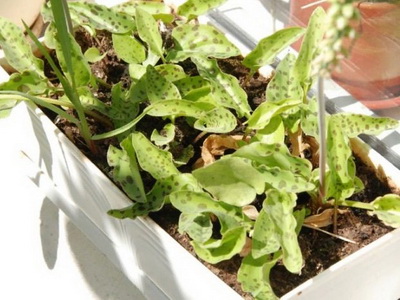

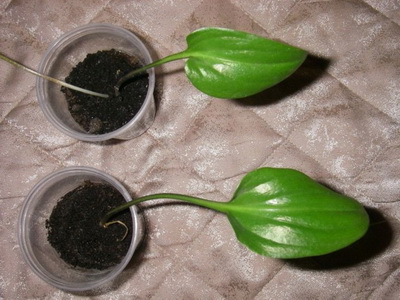
When propagating by cuttings, a leaf with a petiole is separated from the plant, it is important not to damage the petiole. The stalk is placed in a container with water at room temperature. Store in a bright warm place. Within 4 to 5 weeks, roots should form at the cutting. After that, it is transplanted into the substrate.
The seed method of propagation of this crop is rarely used, since the seeds do not always ripen and sprout. You can purchase seed at a flower shop and place it in cups filled with moistened light nutrient substrate. Cover with cling film and put in a warm place with good lighting. After 20 days, sprouts should hatch. The cover must be removed. After the seedlings grow a little, you can transplant them into larger pots.
Care
- Location. A tropical plant is suitable for window sills with a south, southeast and southwest orientation, where it will receive enough light. With poor lighting, the foliage will not show its decorative effect. This should be especially taken into account when caring for spotted drimiopsis, since its leaf plates, with a lack of light, will be faded and monotonous. In the warm season, it is recommended to keep the plant on the veranda, balcony or outdoors under a canopy, but avoid drafts.
- Air temperature. During the growing season, the flower should be kept in a warm environment. The temperature range is within 23 – 27 degrees. From mid-autumn to the end of winter, when the plant is at rest, lower air temperatures are recommended in the range of 13 – 16 degrees.
- Watering. When caring for drimiopsis at home, it should be watered as the substrate dries out, since frequent and abundant watering is not required and, on the contrary, can lead to rotting of the bulbs. In autumn and winter, when the plant is at rest, you can water it once a month.
- Air humidity. This culture does not impose requirements on air humidity, calmly tolerates its increased dryness. In extreme heat, you can spray the leaves to refresh them. From time to time, you need to wipe the sheet plates with a damp cloth to remove dust.
- The soil. For the cultivation of drimiopsis, light loose soil compositions with a neutral acid reaction are preferred. You can purchase a ready-made substrate for bulbous crops, or cook it yourself by mixing leafy soil with turf, peat, sand, humus and charcoal.
- Topdressing. Fertilizers will be required only during the period of intensive growth and development. It is enough to feed the flower with a mineral composition containing potassium, nitrogen, phosphorus 2 times a month with an interval of 2 weeks. Suitable fertilizer for succulents. Fertilization must be combined with irrigation.
- Transfer. Up to three years, ledeburgia are transplanted annually, then every 3 years. This work is carried out in April. New pots should be slightly larger in diameter. The container for this culture is chosen wide and shallow with a hole for draining excess water. At the bottom of the pot, a layer of expanded clay mixed with brick chips or sand must be laid to create drainage. After that, the soil is poured, a recess is made, the plant is carefully placed in the center of the pot so that the bulbs remain ½ on the surface of the earth. The substrate is compacted, watered.
Look at the photo below, which shows the room flower drimiopsis, showing its characteristic external features:










